What are the useful properties of the garden lilac, how to properly prepare tincture and decoction for treatment, and also what contraindications can there be for receiving? Read more about this in our article.
Contents
- Lilac: medicinal properties
- Lilac in folk medicine: recipes
- Lilac tincture on vodka or alcohol for the treatment of joints: recipe
- Lilac tincture from rheumatism: prescription
- Lilac from the cold: recipe
- How to apply the lilac kidney for diabetes:prescription
- Lilac leaves with pyelonephritis
- Treatment of skin diseases
- How to prepare ointment from lilac?
- Use of lilac for eye treatment
- Application of lilac in cosmetology
- Contraindications to the use of lilac
- Lilac allergy: symptoms of
- Video: We treat joints with lilac flowers
Lilac is a shrub widely spread for planting among gardeners and gardeners. Beautiful flowering of this plant is used for decorative decoration of personal plots. Many people like lilacs for their unusual fragrance, to someone the flowering branches of lilac remind us of childhood and school examinations. In addition to aesthetic qualities, this plant contains a large number of healthy substances and is successfully used in prescriptions of herbal medicine.
Lilac: medicinal properties
The medicinal components are endowed with buds, inflorescences, bark and leaves of the garden lilac, which contain ascorbic acid, essential oils, phytoncides, phenoglycosides, resins, tannins that affect the activity of enzymes in the body.
Medicinal preparations prepared from lilacs have the following effect on organs and systems:
- Have analgesic, antipyretic, antimicrobial and antibacterial action.
- Used to relieve convulsions, muscle spasms, neuralgia.
- Lower the level of sugar and cholesterol.
- Have strong diuretic and diaphoretic properties.
- Supports the suppression of inflammation in infectious diseases of the genitourinary system - pyelonephritis, urolithiasis, cystitis, urethritis, endometriosis.
- Used to treat purulent wounds, treat dermatitis, eczema, psoriasis, traumatic and fungal lesions of the skin layer.
- Relieve the condition with inflammation of the joints and other pathologies of the musculoskeletal system.
- Have a positive effect on the work of the cardiovascular system and the state of blood vessels, normalize blood pressure.
- Effective in the treatment of diarrhea.
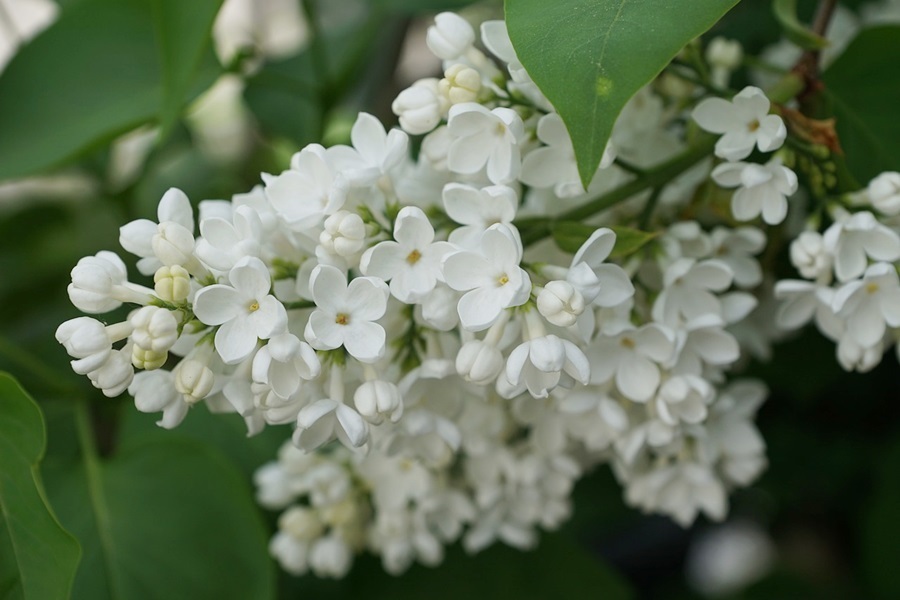 Shrub with white flowers has the most useful healing qualities
Shrub with white flowers has the most useful healing qualities Lilac in folk medicine: recipes
For therapeutic purposes, the dried parts of the bush are more often used. Fresh leaves and inflorescences contain some toxic substances and can be used only for external use. Among the specialists-herbalists it is believed that the most pronounced useful properties are the white lilac variety.
- Usually, flowers are collected together with branches at a time when the buds are already formed, but have not yet opened. Dry them in fresh air without direct sunlight or in special dryers.
- It is recommended that the leaves of the plant be collected closer to the middle of summer, then dried.
- The bark, intended for medical purposes, is cut only from young, thin shoots. Collection and drying of the bark of the bush are carried out simultaneously with the leaves.
- Harvested vegetable raw materials after drying should be stored in wooden boxes or linen bags no more than 2 years. It is not recommended to use any kind of polyethylene for storage.
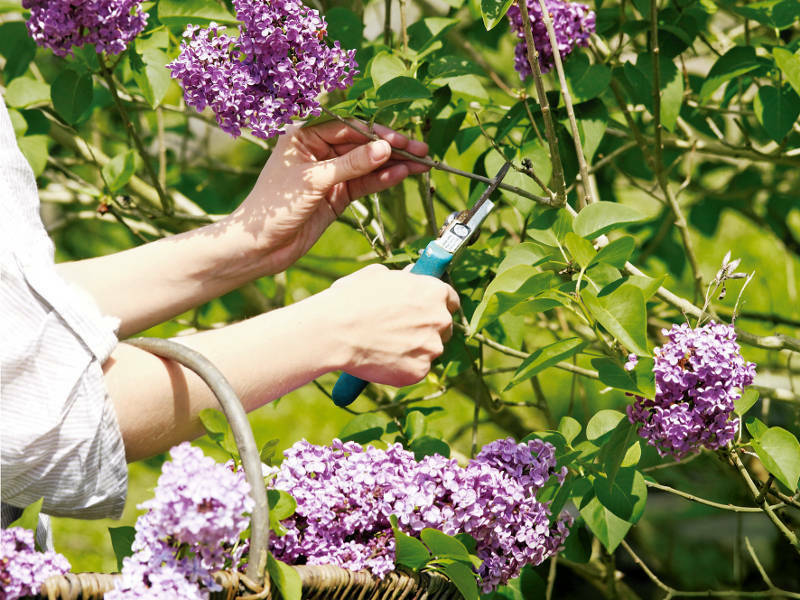 Branches should not be broken off - gently cut shoots with a pruner
Branches should not be broken off - gently cut shoots with a pruner Lilac tincture on vodka or alcohol for joints: recipe
To achieve the effect of preparations based on lilac extract, a long and systematic application is necessary.
- To prepare the tincture for , , place 2 on . spoon dry colors in glass or ceramic capacitance , fill 1 , 5 vodka glasses or glass 1 70 % - Nogo medical alcohol , tightly close . Leave for infusion in cool location without direct sunlight access in during 2 - x weeks . Do not forget daily well shake contents of .
- Accept is facility need to 1 h . spoon times in day for 20 minutes to basic receiving food .
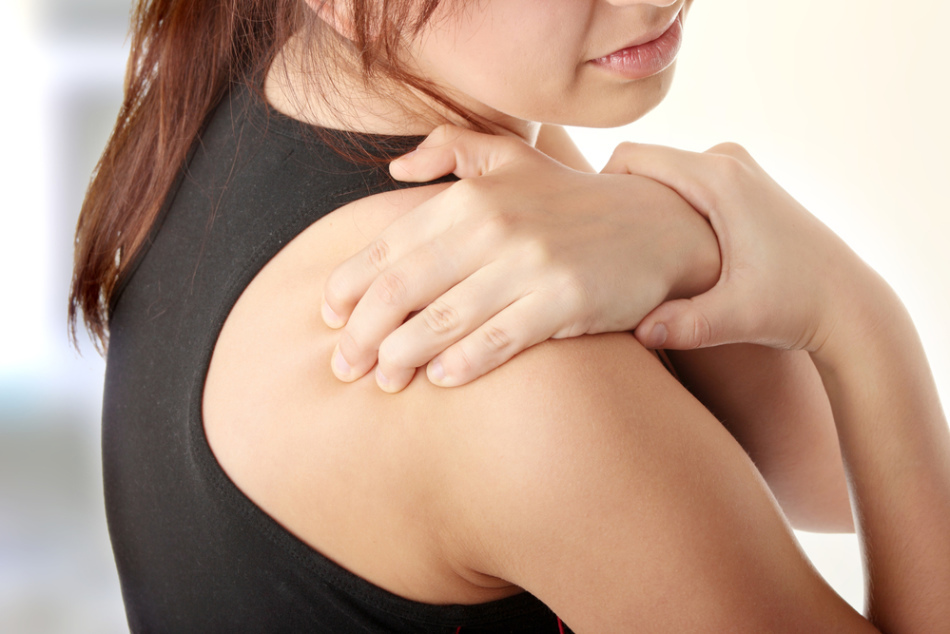 Rubbing for osteochondrosis and joint pain
Rubbing for osteochondrosis and joint pain Lilac tincture against rheumatism: prescription
For rheumatism, various medicinal and herbal preparations containing lilac extract( gels, ointments, solutions) are prescribed as part of complex therapy. At home, you can use a tincture for grinding.
- Take 2 tbsp.spoons of dried plant flowers, pour 100 ml of vodka and leave for 2 - 3 hours to infuse, then strain.
- Use externally, rubbing with massaging movements in sore spots Z-4 times a day or for applying gauze compresses at night.
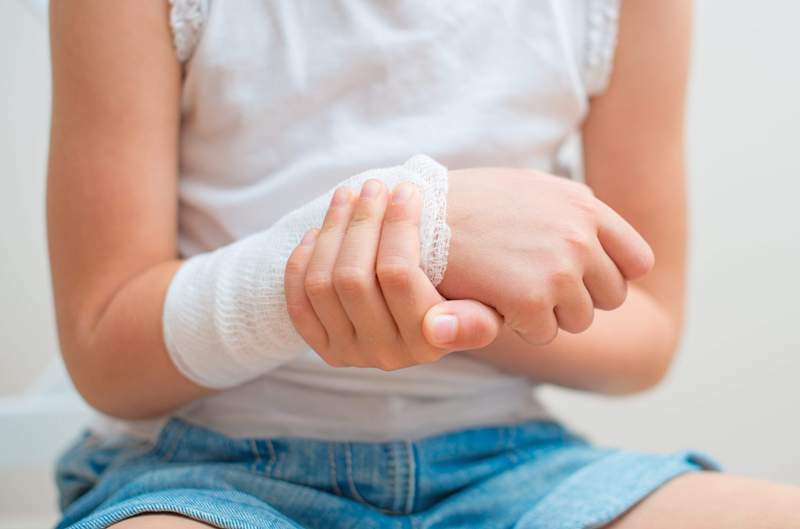 Compresses for rheumatism, arthritis, polyarthritis
Compresses for rheumatism, arthritis, polyarthritis Lilac from cold: recipe
For colds and viral diseases accompanied by fever and fever, lilac broth is used as an effective antipyretic, sudorific and anti-inflammatory agent.
- In ozmite by 30 g dried lilac kidney and colors , add 20 g of lime blossom, fill 2 cups boiling , boil still in for 10 minutes, after then remove with plates and leave in the closed vessel for infusion and cooling approximately on 1 - 2 hours .
- Before application broth need strain and drink warm to 50 mL 4 times to day .
If catarrhal or viral infection disease accompany irritation and pain throat( angina , pharyngitis , laryngitis ), helpful regular rinse solution with addition alcohol tincture garden lilac .
- To do this, add 1 cup of warm boiled water to the glass.spoon of tincture, 4-5 drops of iodine, stir.
- Rinse with this solution throat З-4 times a day. Such a tool has a local antibacterial and antiseptic effect, it cleans the culture of bacteria and removes inflammatory processes and swelling in the cavity of the oropharynx.
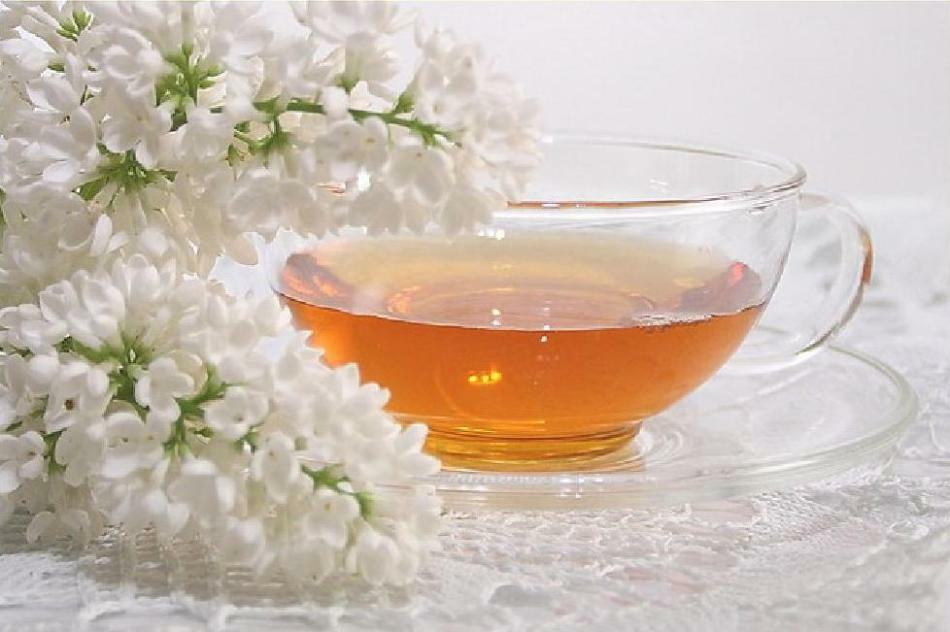 Broth lilac help with colds, acute respiratory infections, influenza, whooping cough, malaria
Broth lilac help with colds, acute respiratory infections, influenza, whooping cough, malaria How to apply buds of lilac in diabetes:
recipe When increased level sugar recommended take broth of dried kidney , harvested in period of swelling .Put
- 20 g kidney pan, add 200 ml water and boil 10 minutes on a water bath , leave on hour for cooling . Then strain and dilute with hot with water to volume 200 mL .
- Take the decoction of according to 1 as . spoon W fold in day . After 2 - x weeks treatment need do break on month , then course can repeat .
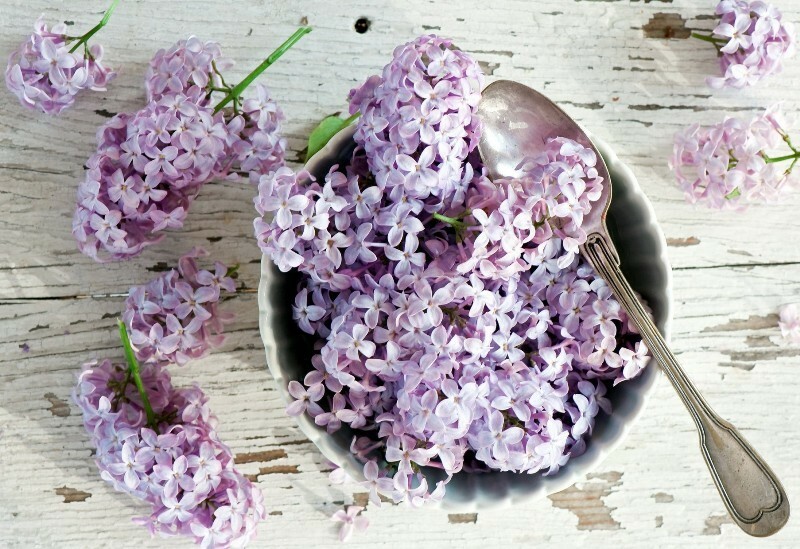 Decoction of flowers helps to lower the level of sugar and cholesterol
Decoction of flowers helps to lower the level of sugar and cholesterol Lilac leaves with pyelonephritis
For chronic or acute inflammatory diseases of the genitourinary system, as well as diagnosing sand and kidney stones, infusion of leaves is useful.
- For preparation lotion , toning and restoring skin face and neck , mix over 1 st . spoon dry colors lilac , chamomile and witch hazel . Fill 2 - with with boiling water cups and leave to of the complete . After percolation , add the composition of 1 h . spoon juice aloe , 3 - 4 drops ethereal oil sweet orange . With using wadded drive wipe face and neck after morning and evening wash .
- For softening and humidification coarse skin hand and strengthening nail take to 1 h . spoon celandine , dry lilac flowers and rosehip fruit , well chop all ingredients mortar or blender , add W Article . spoon flaxseed ( almond or olive ) oil , 1 h . spoon of glycerin . Leave in cool dark location of on 7 - 10 days of . Strain composition via large screen for removal particles plants . Lubricate with and hand daily area before sleep .
- lotion from cellulite and flabby skin can prepare , by taking 0 , 5 h . spoon pepper tincture , according to 1 st . spoons lilac and juice lemon and 250 ml apple vinegar spoons. Apply with massaging movements on problem areas after adopting hot bath or shower . strengthen useful effect help preliminary use scrub deep purification and amplification circulation in subcutaneous layer, and also application prepared means for wraps . For this after application lotion wrap body food film for 30 minutes . After half an hour after use Rinse warm with water and apply on areas of exposure Moisturizing cream .
- Lilac useful for save beauty hair , prevent their dryness and loss , recovery water - fat balance scalp . For the this is . spoons dry raw boil in 1 liters filtered water , give cool , strain . Rinse hair with decoction after using shampoo . Prepare the mask from the 2 st . burdock oil , 1 h . spoons lavender and 1 ampoules and . Massage the composition into the skin head , wrap the polyethylene with the and film warm the with the using the shawl or towels . Leave for exposure on 30 - 40 minutes , then rinse with soft shampoo .
- Take the 2 . spoon dry shredded leaf plants , fill 250 ml hot water , bring to boiling and leave for infusion on 2 - W hours .
- Before use strain through gauze and well press . Drink times in the day on the 2 st . spoons before with food .
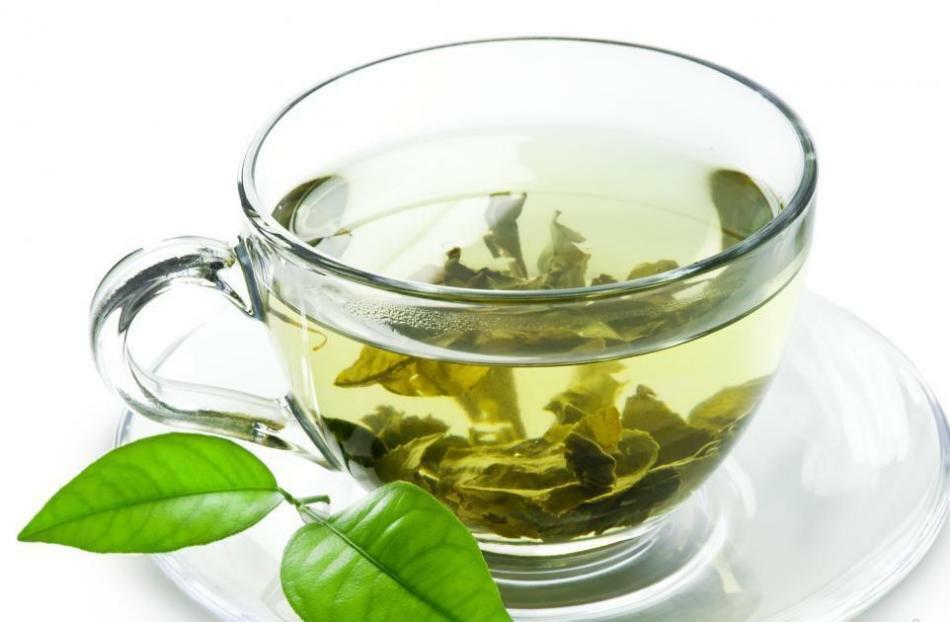 Plant leaves are effective in the pathology of the genitourinary system
Plant leaves are effective in the pathology of the genitourinary system Treatment of skin diseases
Fresh leaves of the plant have wound healing, antibacterial and antiseptic action. Infusion, prepared from leaves, is used to treat open and purulent wounds, furunculosis, skin damage, fungal and infectious skin lesions.
- In enameled ware 2 tbsp.spoons of fresh, finely chopped leaves, pour 200 ml of boiling water, bring to a boil.
- After infusion( 2 - 3 hours) strain and use for lavage or lotions on the affected area until the condition improves. The dressing should be changed every 2 to 3 hours.
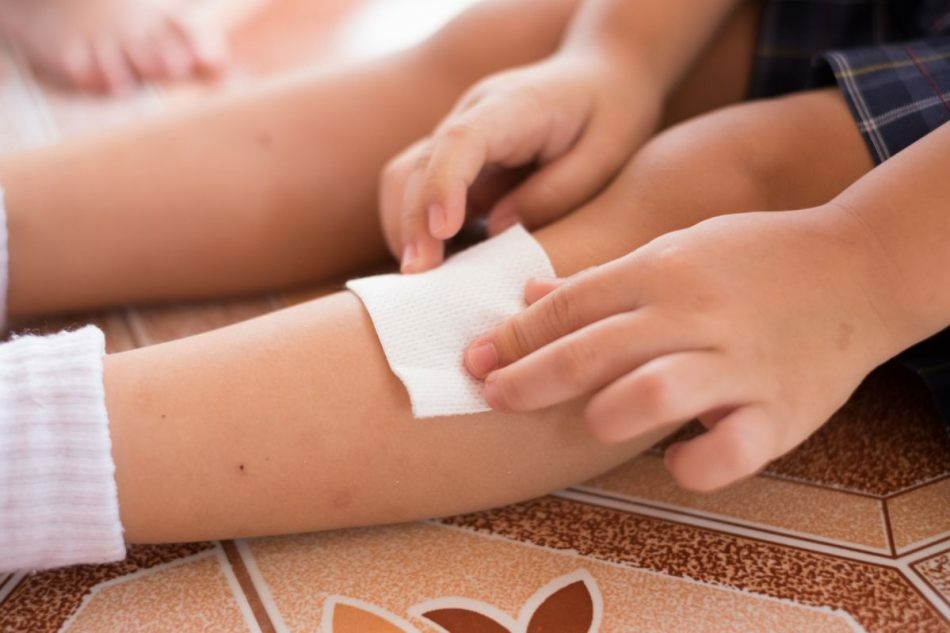 Wax & Wound Handicaps
Wax & Wound Handicaps How to make ointment from lilac?
Useful substances that make up the plant help with migraines and headaches of various etiologies.
- For preparation of ointment 2 tbsp. Spoons of dried flowers chop in a blender to the state of powder, mix thoroughly with 2 st.spoons of soft unsalted butter or pharmacy vaseline.
- Rub the whiskey and the occiput while strengthening the headache. It is also possible to lubricate this composition with diseased areas with inflammation and joint injuries, heel spur, bruises and sprains.
 Ointment from lilac flowers - an effective medicine for migraine
Ointment from lilac flowers - an effective medicine for migraine Use of lilac for eye treatment
- With visual impairment, redness, dryness and rapid eye fatigue, brew lilac flowers in the form of tea( 1 tsp for 200 ml of boiling water), cover and allow to cool.
- Every day before going to bed, moisten the gauze dressings in this decoction and apply to the eyes for 10-15 minutes. Continue treatment until the condition improves. Such compresses can be used to prevent vision problems if your activity is related to the constant tension of the visual apparatus.
- The anti-inflammatory properties of lilacs are used in the treatment of barley on the eyelid. Take a few fresh leaves, rinse well and grind.
- The resulting gruel is placed on a sterile gauze napkin and applied to the affected area for 20-30 minutes. The procedure can be repeated 4-5 times a day. By the evening you will notice that the swelling and redness noticeably decreased. Continue treatment until the normal appearance of the skin is fully restored.
 Fatigue and irritation of the eye will remove the compress from the lilac broth
Fatigue and irritation of the eye will remove the compress from the lilac broth Application of lilac in cosmetology
Lilac extract is a part of many facial care products, for the face, body and hair. You can prepare a useful composition using simple components.
 Use lilac broth for face, body and hair beauty
Use lilac broth for face, body and hair beauty Contraindications to the use of lilac
Despite its wide range of useful properties for the treatment and prevention of many diseases, this natural remedy is not recommended for use in the following pathologies:
- glomerulonephritis and acute renal failure
- severe diseases of the gastrointestinal tract
- amenorrhea
- gestation and lactation due to the alcohol base of the tincture
- atonic constipation
- individual intolerance
Do not increase the prescribed dosage of intake - in large quantities, the lilac extract can cause disturbances fromdigestive system and general poisoning. Glycosite syringin, contained in the plant, during the chemical reaction is converted into a hydrocyanic acid, known for its toxic properties.
Any folk methods of treatment using tincture or lilac broth are only an auxiliary method of therapy and can not replace a visit to a doctor for examination and treatment with medications.
The opinion of traditional medicine always adheres to the main principle of healing: "do no harm", so it is worth to carefully read all the recommendations and contraindications, and also to consult with your doctor before starting phyto-drugs.
 Consultation of a specialist before beginning herbal medicine
Consultation of a specialist before beginning herbal medicine Allergy to lilacs: symptoms of
Allergic reactions to lilacs are associated with a fairly sharp and persistent smell of inflorescences, a large amount of pollen in the flowering period and plant constituents of active substances.
Only an allergist can determine the reaction to a particular irritant after conducting the appropriate tests.
Symptoms of lilac allergies are usually similar to the signs of diseases caused by weakening of the immune system function:
- inflammation of the nasal mucosa
- conjunctivitis
- complications from the respiratory system - up to asthmatic manifestations and signs of suffocation
- in rare cases there are edemas and severe lesions of the
